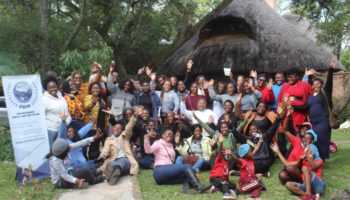ZBIN covers 6 countries in Southern Africa namely Zimbabwe, Zambia, Malawi, Namibia, Botswana and South Africa. Our posts mainly target nationals from those 6 countries and we also include the Diaspora. We have 2 business groups under the ZBIN umbrella for South Africans and Malawians, in future we hope to cover Namibia, Zambia and Botswana.
We continue with our vision Towards a Diaspora Strategy where we hope that governments in Southern Africa will appreciate the importance of the Diaspora community and develop strategies for engagement with this important community.
We start with a few highlights from the World Bank MIGRATION AND REMITTANCES FACTBOOK 2016 THIRD EDITION BOOK
- More than 247 million people, or 3.4 percent of the world population, live outside their countries of birth. Although the number of international migrants rose from 175 million in 2000 to more than 247 million in 2013 and will surpass 251 million in 2015, the share of migrants has remained just above three percent (of world population) for the last fifteen years.
- The top migrant destination country is the United States, followed by Saudi Arabia, Germany, the Russian Federation, the United Arab Emirates, the United Kingdom, France, Canada, Spain, and Australia. The top six immigration countries, relative to population, are outside the high-income OECD countries: Qatar (91 percent), United Arab Emirates (88 percent), Kuwait (72 percent), Jordan (56 percent), and Bahrain (54 percent).
- In 2015, worldwide remittance flows are estimated to have exceeded $601 billion. Of that amount, developing countries are estimated to receive about $441 billion, nearly three times the amount of official development assistance. The true size of remittances, including unrecorded flows through formal and informal channels, is believed to be significantly large.
- The cost of remittances is the highest in Sub-Saharan Africa and in the Pacific Island countries (for example, it costs more than 20 percent to send $200 from Australia to Vanuatu, and 19 percent from South Africa to Zambia). As of the third quarter of 2015, the average cost worldwide remained close to 8 percent—far above the 3 percent target set in the Sustainable Development Goals.
Below we look closely at micro finance involvement in the diaspora remittance sector. This is a key missing link especially when one looks at Zimbabwe where close to a US $1 billion was remitted in 2016. The figure can double or triple if an enabling environment is in place to encourage investment by the Diaspora. We encourage Researchers and Policy Makers to look closely at the organisation called Kiva and the link with micro finance institutions.
Give a man a fish, he’ll eat for a day. Give a woman microcredit, she, her husband, her children and her extended family will eat for a lifetime.’ Bono
According to Johnson and Sedaca many experts feel that increasing the involvement of credit unions and microfinance institutions (MFIs) in the remittance transfer process is a promising means to expand financial access to the poor, particularly in rural areas with no access to the larger commercial banks. Microcredit and microfinance are relatively new terms in the field of development, first coming to prominence in the 1970s and they are recognized as effective tools to alleviate poverty. ‘Broadly speaking, microfinance for loans (i.e., microcredit) is the provision of small-scale financial services to people who lack access to traditional banking services. The term microfinance usually implies very small loans to low-income clients for self-employment,
There are said to be at least nine traditional features of microfinance:
1 Small transactions and minimum balances (whether loans, savings, or insurance)
2 Loans for entrepreneurial activity
3 Collateral-free loans
4 Group lending
5 Target poor clients
6 Target female clients
7 Simple application processes
8 Provision of services in underserved communities
9 Market-level interest rates.
It is reported that microfinance institutions are increasingly looking to diasporas as a source of funding for small enterprises. To that end, the World Diaspora Fund (WDF) was launched in 2010 and it is an initiative of the Working Group of the International Migrants Remittances Observatory for Least Developed Countries in partnership with several public and private organizations. The WDF is intended to offer migrants a secure investment vehicle (microcredit organizations) that will contribute to the development of their countries of origin.
The WDF will invest through loans, guarantees, or even taking stakes in microfinance institutions in the South. The Fund will also participate in financing infrastructure identified by the migrants. The Fund will invest through guarantees, loans and equity in microfinance institutions that are regulated and sustainable. It will also participate to the co-financing of infrastructures proposed by the migrants. Furthermore, organizations such as Kiva.org provide a channel through which diaspora members can provide microfinance to the homeland. Kiva is a non-profit organization with a mission to connect people through lending to alleviate poverty. Leveraging the internet and a worldwide network of microfinance institutions, Kiva lets individuals lend as little as $25 to help create opportunity around the world. Kiva works with microfinance institutions on five continents to provide loans to people without access to traditional banking systems. One hundred percent of the loan is sent to these microfinance institutions, which Kiva call Field Partners, who administer the loans in the field. Since Kiva was founded in 2005 it has made $203 million in loans through 568,876 Kiva lenders with a 98.65% repayment rate.
‘If you look at Kiva.org, people with a very modest amount of money can make a huge positive impact all around the world. There are so many people who want to give but don’t really know how to do it. Through Kiva.org, people around the world can become micro-bankers to developing world entrepreneurs, who have their own ideas, so we can give them a chance to raise their kids with dignity, send their kids to school, and in troubled places like Afghanistan we can marginally increase the chance that peace can prevail, because people will see there is a positive alternative to conflict.’ Bill Clinton, 42nd President of the United States
![]()





